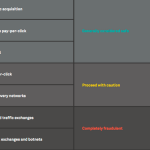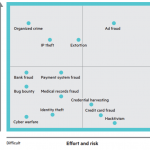Gamut Data Reveals Characteristics Of Fraudulent Ad Impressions
Gamut Data Reveals Characteristics Of Fraudulent Ad Impressions
by Laurie Sullivan @lauriesullivan, (December 22, 2017)
Cox Media Group’s Gamut division on Friday released data that analyzes the characteristics of fraudulent sites.
The numbers show that when fraud filters are not in place, measurements that seem positive are often inflated by bots. Sites with high levels of fraud were analyzed to have a higher viewability percentage, meaning that those committing fraud have become increasingly clever in getting advertisers to pay a higher premium for viewable impressions.
The study was conducted by comparing the results from fraud sites known for low or high fraud. The group analyzed the campaign metrics using Gamut’s measurement provider, Moat, which determined the sites to test based on historic data. The tool analyzes viewability, as well as mouse movements that they believe are human and nonhuman traffic to and on websites.

Gamut set up ad placements on publisher sites that analysts thought would have a propensity to create a lower amount of fraud, a higher amount of fraud, and a higher amount of fraud with the ability to optimize the advertisement and change the settings in real-time.
Among the ad placements known to have low fraud rates, Gamut saw that 98.41% of the 489,000 impressions analyzed were identified as humans rather than bots. The in-view percentage, however, was 23.50%, and in-view time 15.09%.
About 68.04% of the 355,048 impressions analyzed were identified as human on sites known for high fraud. On these sites the in-view percentage was 59.55% and in-view time 34.12%.
High in-view percentages are important to advertisers, but bots have been programmed to be smart enough to mimic human behavior. Advertisers really need to look at metrics other than clicks, such as interaction rates that show when the mouse moves within the frame of the ad for at least half a second. This behavior indicates that someone read the content.
High fraud sites looked to have high in-view time and interaction rates, which means those committing fraud are creating fake-interactions like a real human, such as moving the mouse and scrolling up and down the page.
With high fraud sites, there is an increased percentage delivered to outdated browsers, as well as an increase in no referral. Humans always navigate from site to site, so the chances of referral information is high, whereas a bot will not be referred.
MediaPost.com: Search Marketing Daily
(18)













